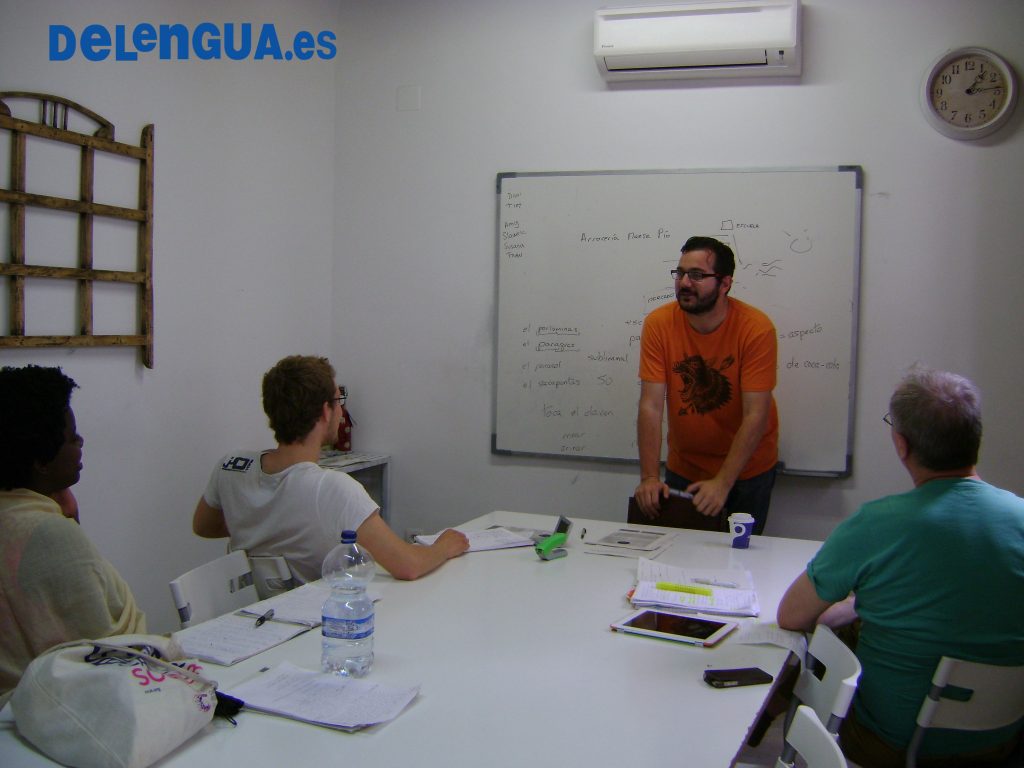| Español | English | |
|---|---|---|
| Con el estilo indirecto se expresa cosas ya dichas. Por ejemplo para transmitir informaciones de una persona a otra. Para utilizar el estilo indirecto hay que prestar atención a unas reglas. A un lado el cambio de los tiempos, al otro lado el cambio de la indicación de personas y del lugar.
Si el verbo introducido aparece en presente o en pretérito perfecto, el tiempo de la oración subordinada no se cambia. La única excepción es el imperativo. Si se quiere transmitir una orden hay que cambiar el modo del imperativo al presente de subjuntivo: Abre la ventana. – Dice que abra la ventana. Descripciones de personas y de lugares se cambian como en el ejemplo siguiente: ¿Podéis venir a mi casa mañana? – Preguntó si podíamos ir a su casa al día siguiente. Las reglas del estilo indirecto están bien definidas. Para repetir lo descrito prueba el material de aprendizaje gratuito que la Escuela Delengua en Granada te ofrece. Bajo http://www.delengua.es/spanish-courses-spain/free-spanish-resources.html vas a encontrar material y juegos que te ayudan aprender el español. |
|
With the indirect speech you can express things which are already said. For example to transmit information from one person to another. To use the indirect speech you have to pay attention to some rules. On the one hand the change of the tenses, on the other hand the change of the indication of person or location.
If the introducing verb appears in the present or the past perfect, the tense of the subordinate clause doesn’t change. The one and only exception is the imperative. If you want to transmit an order you have to change the mode from imperative to the present of the subjunctive: Abre la ventana/ Open the window. – Dice que abra la ventana/ He said that I opened the window. The description of persons or locations changes like in the following example: ¿Podéis vernir a mi casa mañana?/ Can you come to muy house tomorrow? – Preguntó si podíamos venir a su casa el día siguiente/ She asked if we could come to her house the next day. The rules of the indirect speech are well defined. To repeat the described part try the learning-material which offers the language school Escuela Delengua in Granada for free. At http://www.delengua.es/spanish-courses-spain/free-spanish-resources.html you will find learning material and games which will help you to learn Spanish. |
For more information visit our website:
Search
Archives
-
Recent Posts
Tags
activities Alhambra Andalucía Andalusia Aprende español en España Aprende español en Granada Cine Español cinema cultura Cursos de espanol en Granada Cursos de español Cursos de español en España Cursos de lengua Cursos de lengua en España Cursos de lengua en Granada Delengua activities España español fiesta film flamenco Gramática Española / Spanish Grammar Granada hiking in the Sierra Nevada la lengua española Language courses language courses in Granada language courses in Spain learn Spanish learn Spanish in Granada Learn Spanish in Spain Pedro Almodóvar senderismo en la Sierra Nevada Sierra Nevada Spain spanish Spanish Courses Spanishcourses in Granada Spanish courses in Granada Spanish Courses in Spain Spanishcourses in Spain Spanish Grammar Spanish Language School the Spanish grammar the Spanish Language














